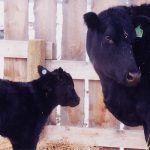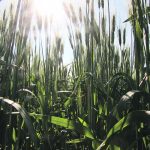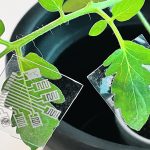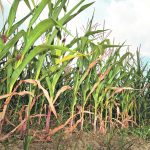
Stories by Margaret Evans


Individualism found harmful to crop productivity
Better understanding how plants compete with each other under high-density cropping conditions may help boost yields
Plants in a field are thought of as all the same throughout their sprouting, growing and maturing stages. But in a field where plants grow in high density and vie for light, an individual plant’s social behaviour can be competitive. According to researchers at the Leibniz Institute of Plant Genetics and Crop Plant Research in […] Read more
System measures grass from space
Two Irish technology companies use satellite imagery to help livestock producers track how well their grass is growing
Grassland farming has taken on a whole new dimension with a technology that accurately measures the height of grass from space. The innovation was developed in Ireland earlier this year by two technology companies, Origin Enterprises and Aspia Space. The goal was to find ways to increase farm productivity, operational efficiency and profitability. “At Origin […] Read more
U.S. study tracks potential spread of African swine fever

Gene discovered that controls ‘weeping’ growth in apple
Incorporating weeping properties would be an additional economical and labour-saving advantage for apple growers
The practice of tying down apple tree branches to improve productivity has been done for more than a century. How the practice works has not been fully understood, however studies have shown that bending the branches helps the trees provide more nutrients and carbon toward flowering and fruiting rather than toward leaf and branch growth. […] Read more
Study examines how competing microbes access plants
Bacteria that demonstrate positive effects on plants in the lab often can’t compete in field conditions
The goal is to find a strain, or several strains, of bacteria that offer maximum benefit to the host crop and can successfully compete against local bacterial strains already in the soil.
Electronic patch helps monitor disease

Researchers encourage plants to be co-operative
Discovery of co-operative traits could be used in modern breeding programs to provide efficient ways to increase yields
Plants compete. They grow tall and spread their leaves to reach sunlight and outshine other plants. Roots will spread deeper and wider in search of water and nutrients, entangling themselves with neighbours’ roots. But a recent experiment by researchers at the University of Zurich and Agroscope, Switzerland’s centre of excellence for agricultural research and affiliated […] Read more
Fungal infections pose increasing risk to crops

Molecular mechanism links roots to phosphorus
Researchers discover the gene that regulates when roots stop growing, which occurs within hours of a lack of phosphorus
Researchers at Michigan State University have discovered a specific gene that regulates when the roots of a plant stop growing and they have identified this reaction as happening within hours of a lack of phosphorus.


